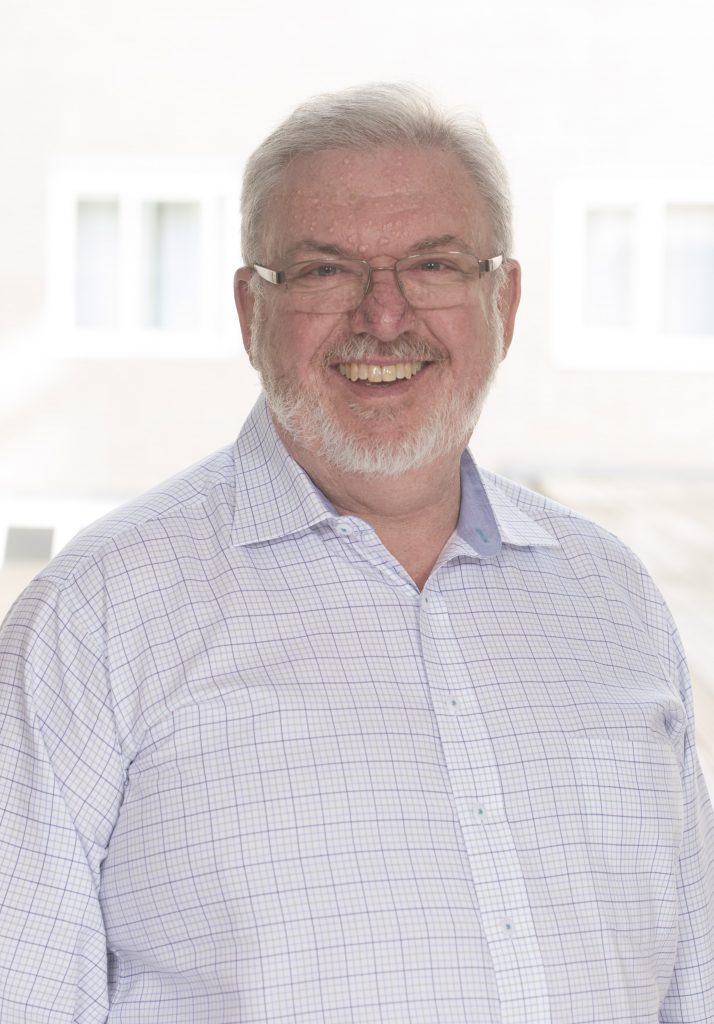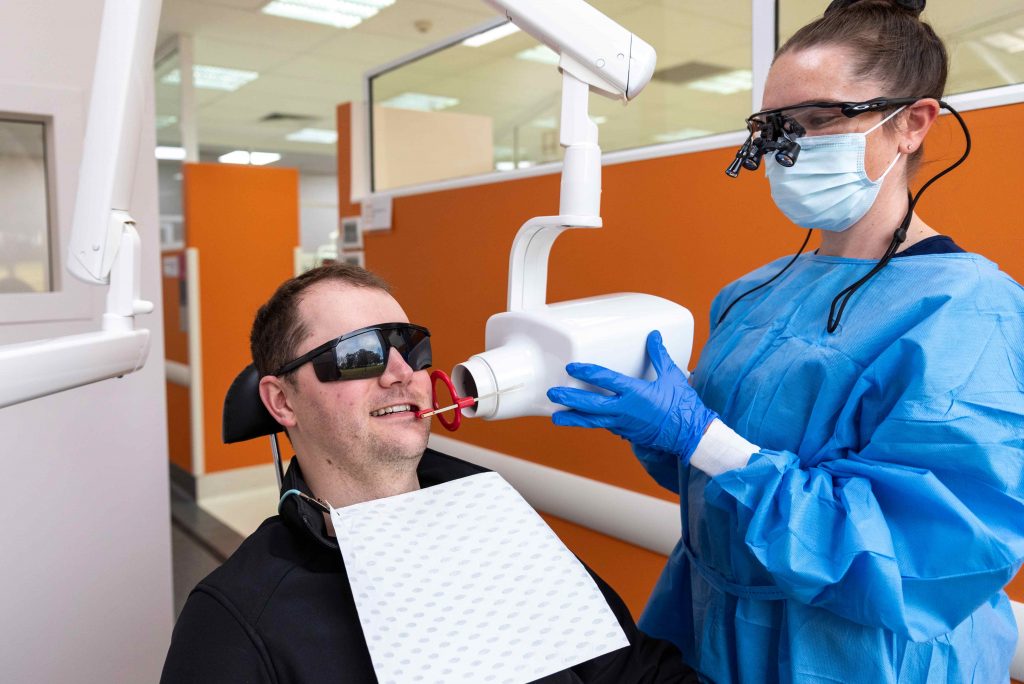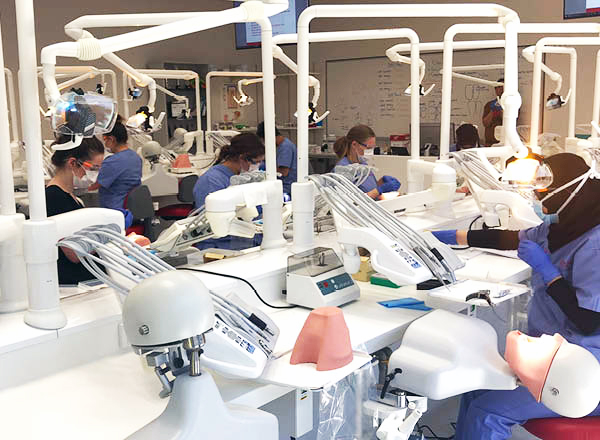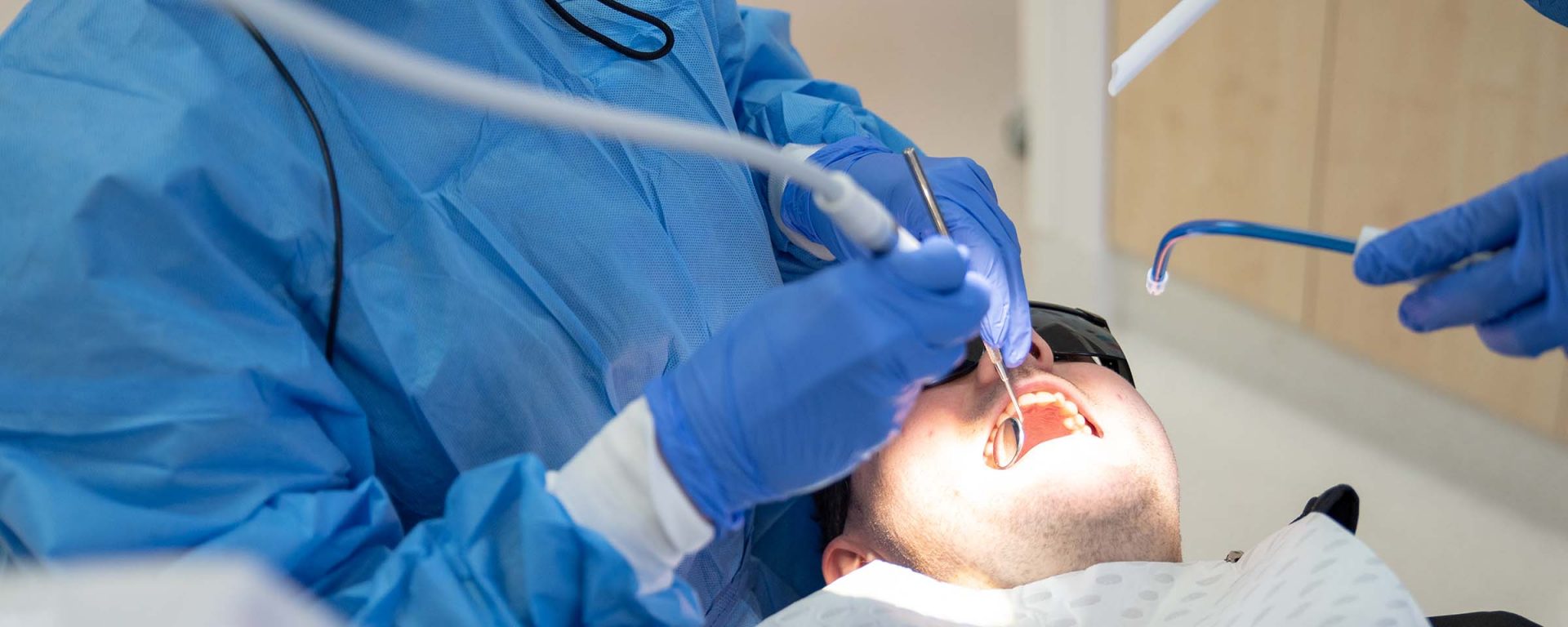If you’ve ever visited a dentist for more than just a check-up, then there’s a good chance you’ve become acquainted with some form of restorative dentistry – and that’s the tooth!
But what is restorative dentistry? Why is restorative dentistry so important? And what role does it play in keeping our pearly whites, well, white and bright?
We ask Tony Dawson, Associate Professor in Prosthodontics and Head of Discipline (Dentistry) at Charles Sturt.
Tony’s illustrious career in the dental industry spans more than 40 years, starting in the Defence Force before spending time as a specialist in private practice, and now as an academic.

“For me, the most enjoyable part of my job has been the people that I have got to meet and help. The technical aspects are interesting and often challenging, but they tend to become routine over time. The people are always changing and never get boring.”
What is restorative dentistry?
“Restorative dentistry relates to repairing the damage to teeth done by disease and trauma. Tooth decay is the most common source of problems. Along with prosthetic dentistry (prosthodontics), which aims to replace missing teeth, restorative dentistry entails what most people think dentists do.
“The job is much larger though, looking primarily to prevent problems before they get to the stage where repair, or replacement, is needed. For most people, their smile is an important part of their view of themselves, so a good understanding of aesthetics is important in restorative dentistry, where we want to make our repairs indetectable to others. Dentists also need to be very precise in their work, so they need good eyesight and hand-eye coordination.”
Most common restorative dentistry procedures

1. Check-ups. This is the most common thing that dentists do – assess patients to detect problems (hopefully as early as possible, as it is easier to fix small issues rather than letting them get to be big problems), advising them about what they need to consider having done, and then planning how these treatments can be managed.
2. Preventive treatments. These are non-invasive treatments aimed at preventing disease from starting, or minimising the impact of disease that is present. This may involve educating patients about methods they can use to avoid common oral diseases, through to the application of agents to arrest tooth decay or gum disease.
3. Fillings or direct restorations. This is probably what most people think dentists do all the time. It’s a large part of what we do, but probably not the major part of our work. Fillings are placed directly into prepared teeth where tooth decay or other damage has been removed. These fillings are usually made of a strong, tooth-coloured plastic material but can also be made of silver amalgam.
4. Indirect restorations. Sometimes, the treatments people need are too large and complex to be repaired with simple fillings. In these situations, the repairs are made in a dental laboratory and later fitted to the patient’s tooth. This type of restoration includes procedures like veneers and crowns.
Trends in restorative dentistry
“The focus in dentistry today is to try to prevent the need for treatment at all. All our treatments have some side effects and risks of further problems, so trying to prevent the need for treatment is better for our patients in the long run.
“When I first qualified, the incidence of tooth decay was in decline – mainly due to fluoridated water and toothpastes. Unfortunately, this trend has reversed to a degree because of the same causes as the obesity epidemic – the overabundance of sugar in modern diets. We are seeing new decay in young patients – more so in recent years – and the damage done results in challenges for those patients throughout life. None of our fillings lasts forever, so they will need to be replaced over time, leading to bigger and more complex treatments. Thus, our older patients who are keeping their teeth into old age have a greater burden of treatment due to this need for maintenance.”
Why restorative dentistry is so important

“If allowed to proceed, tooth decay will progress to the point where the patient’s tooth may be lost, with functional, aesthetic and (possibly) psychological consequences. Restorative dentistry aims to stop, or at least slow, this progression of disease allowing patients to retain comfortable, functional and aesthetically pleasing teeth for life.”
Top tips to avoid restorative dentistry
1. Watch what you eat, and how often you eat. Tooth decay is a disease driven by frequent dietary exposure to sugars and other carbohydrates. Minimising this risk through a healthy diet can significantly reduce, or possibly avoid, the need for fillings.
2. Keep your teeth clean. Dental plaque contains bacteria that are involved in both tooth decay and gum disease. Regularly removing the plaque from your teeth is a vital part of your daily preventive dentistry program.
3. Wear a mouthguard when playing sport. Sporting trauma is a significant cause of dental damage and the need for restorative treatment. Mouthguards significantly reduce this risk.
Where a dentistry career can take you

“A dental degree can lead to opportunities in public health, military service and private industry. It is also a portable qualification that can often be translated into employment overseas. A dental degree from Charles Sturt has an additional dimension. Because of the focus on preparing a clinician who can work independently in a rural location, our course develops a more capable graduate who can more readily adapt to the needs of their situation.”
Study dentistry and oral health
Want to help improve oral health? Study dentistry or oral health with Charles Sturt. Our Bachelor of Dental Science1 and Bachelor of Oral Health (Therapy and Hygiene)2 will help you make a real impact in your community – one smile at a time!

“There aren’t many dental schools like Charles Sturt which give you the opportunity to give back. It’s unique in the sense that you graduate with really good attributes and become a very well-rounded person simply because of the [community engagement] experiences.”
Dr Jessica Zachar
Read more about Jessica’s story.
1 CRICOS 074610F
2 CRICOS 077426D


You must be logged in to post a comment.